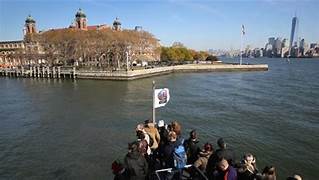On November 12, 1954, a significant event took place in the history of the United States - the closure of Ellis Island as an immigration processing center. Located in New York Harbor, Ellis Island had served as the gateway for millions of immigrants entering the United States between 1892 and 1954. Its closure marked the end of an era and a symbol of the changing immigration policies in the country. Ellis Island holds a special place in American history as the primary immigration station during the peak years of immigration to the United States. From the late 19th century to the early 20th century, millions of immigrants from around the world passed through its doors in search of a better life and the promise of the American dream. The closure of Ellis Island in 1954 came as a result of changing immigration patterns and policies. By the mid-20th century, immigration to the United States had slowed down significantly compared to the massive influx of previous decades. Additionally, the Immigration and Nationality Act of 1952 shifted the focus of immigration processing to American consulates and embassies abroad, reducing the need for a large processing center like Ellis Island. On its final day as an active immigration facility, Ellis Island bid farewell to its last detainee, a Norwegian merchant seaman named Arne Peterssen. As the final immigrant to pass through its doors, Peterssen symbolized the end of an era and the closing of a chapter in American immigration history. After its closure, Ellis Island underwent a period of neglect and abandonment. However, efforts were made to preserve its historical significance, and in 1965, it was designated as part of the Statue of Liberty National Monument. Restoration and renovation work began in the 1980s, and Ellis Island was reopened to the public in 1990 as a museum and immigration center. Today, Ellis Island stands as a powerful symbol of the American immigrant experience. The Ellis Island National Museum of Immigration tells the story of the millions of individuals who passed through its halls, honoring their courage, resilience, and contributions to the fabric of American society. The museum houses exhibits that showcase the journey of immigrants, the challenges they faced, and the impact they had on the nation. Visitors to Ellis Island can explore the Great Hall, where immigrants were processed and inspected, and gain a glimpse into their experiences through photographs, artifacts, and personal stories. The museum also offers genealogy resources, allowing individuals to trace their family roots and discover their immigrant ancestors. Ellis Island serves as a reminder of the diversity and multiculturalism that has shaped the United States throughout its history. It stands as a testament to the importance of welcoming and embracing immigrants, who have contributed their talents, skills, and cultural heritage to the nation's growth and development.
12 November 1954 U.S.A. – – Ellis Island
